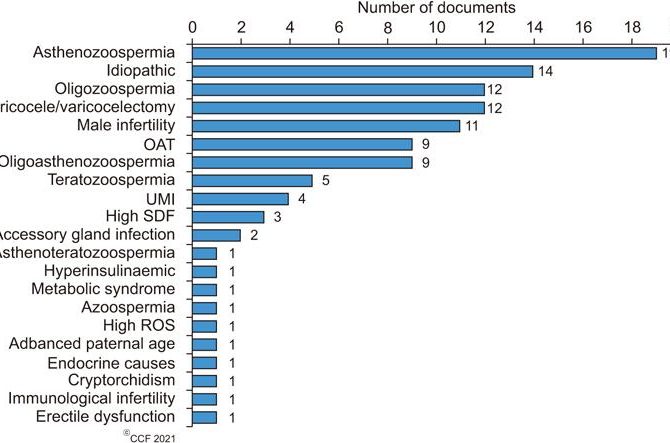Methodical Golf Drills: Elevating Skills Through Structured Practice
Introduction
In the world of golf, where accuracy and technique are crucial, enhancing skills requires a systematic approach to practice. Methodical golf drills, grounded in scientific research and the principles of biomechanics and motor learning, provide a structured framework for golfers to effectively hone their abilities. This article delves into the essential elements of organized practice in golf, emphasizing the blend of scientific principles and practical application. By grasping the mechanisms behind skill acquisition and motor coordination, golfers can engage in drills that significantly boost their performance on the course. Through a thorough examination of pertinent studies and methodologies, we will investigate the effectiveness of methodical golf drills in developing both physical skills and mental sharpness, ultimately aiming to elevate players’ performance standards to new heights.
Grasping the biomechanics of the Golf Swing for effective Drills
Understanding the biomechanics of the golf swing entails analyzing the complex body movements that contribute to a triumphant shot. Essential elements such as the kinetic chain, balance, and posture are foundational for an effective swing. By concentrating on the kinetic chain principle, golfers can optimize the transfer of energy from their lower body to their upper body, ultimately enhancing clubhead speed. This synchronization results in a more powerful and controlled swing, which is vital for accuracy on the course.
Balance is another critical factor that should not be overlooked. Establishing a solid foundation through proper stance and weight distribution is essential for consistency. Golfers should aim to maintain dynamic balance, which refers to the ability to stay steady throughout the swing despite movement. Drills that promote this include practicing swings on one leg or utilizing balance boards to mimic uneven surfaces. The following exercises can be particularly beneficial:
- Single-leg swings: Enhance balance and stability.
- Weighted club practice: Build strength while maintaining form.
- Posture drills: Focus on spine alignment to support proper mechanics.
Proper posture is vital for both swing mechanics and injury prevention. Golfers should maintain a spine angle that aligns the torso and hips, facilitating a smooth swing path.drills that emphasize mirror work or the use of alignment sticks can reinforce correct posture throughout the swing phases. Incorporating the following into your practice routine can enhance your technique:
| Drill | Objective |
|---|---|
| Mirror practice | Observe and correct posture |
| Alignment stick placement | Ensure proper aim and swing path |
| Body weight shifts | Enhance balance during swings |
Motor Learning Principles: Enhancing Skill Retention and Transfer
Grasping the principles of motor learning is essential for improving performance in golf. By implementing structured practice strategies, golfers can optimize their skill retention and the transfer of these skills to real-game situations. Key components include repetition, feedback, and variability in practice, which address different aspects of skill acquisition. Emphasizing these elements helps solidify movements in the golfer’s muscle memory, ensuring that learned skills are readily accessible when on the course.
incorporating diverse practice scenarios can significantly enhance learning.For instance, using various club types or changing the distance to the target during drills can improve adaptability. This practice method fosters better decision-making skills and a deeper understanding of swing mechanics.Deliberate practice engages the golfer’s cognitive processes, creating a clearer link between performance and desired outcomes. Such practices not only build skills but also enhance the golfer’s mental resilience as they adapt to varying conditions.
The following table summarizes effective practice methods aligned with motor learning principles:
| Practice Method | Focus Area | Benefits |
|---|---|---|
| Repetitive Drills | Skill Refinement | enhances muscle memory and consistency |
| Varied Context Practice | Adaptability | Improves flexibility in shot execution |
| Video Analysis | Feedback | Provides visual insights for technical adjustments |
By understanding and applying these principles, golfers can engage in methodical practice that not only builds skills but also fosters confidence on the course. creating a structured surroundings where practice encompasses a variety of scenarios ensures that golfers are not just refining their swing but also preparing to handle the unpredictability of real-game situations with composure.
structured Practice Routines: Crafting a Systematic Approach to Improvement
To elevate your golf game, establishing structured practice routines is crucial. A systematic approach enables players to consistently focus on specific areas of their game, leading to measurable improvements. Start by identifying key aspects of your technique that need attention, such as swing mechanics, putting accuracy, and course management. Design your practice sessions to allocate time to these elements, ensuring balanced progress across all areas of your game.
Incorporating a variety of drills will keep practice sessions engaging and productive. Consider implementing drills that focus on the following areas:
- Grip and Setup: Concentrate on grip pressure, alignment, and stance.
- Short Game: Include chipping and putting drills to improve touch and feel.
- Full Swing: Work on tempo, balance, and follow-through through targeted swing drills.
To monitor your progress, maintain a practice log that records your performance metrics over time. A simple table can serve as an effective tool for this purpose:
| Date | Drill Focus | duration (mins) | Performance Notes |
|---|---|---|---|
| 10/01/2023 | Putting Accuracy | 30 | Improved distance control |
| 10/03/2023 | Full Swing Tempo | 45 | Felt more balanced |
Regularly reviewing this log not only helps identify trends in your performance but also reinforces the importance of discipline in your practice routine. By fostering a structured and methodical approach, you will set yourself up for continuous growth and improvement in your golf skills.
Performance Analysis: Leveraging Technology to Boost Drill effectiveness
In today’s golf landscape, technology has become a crucial element in performance analysis. Utilizing advanced tools such as launch monitors and video analysis software, players can gain valuable insights into their swing mechanics during drill execution. These technologies provide real-time feedback, allowing golfers to identify specific areas for improvement, such as swing path and angle of attack. By correlating drill outcomes with quantitative data, players can adopt a more scientific approach to their practice routines.
Furthermore, the integration of wearable devices has transformed how players monitor their physical performance. Devices that track metrics like heart rate, shot accuracy, and swing speed enable golfers to understand how their bodies respond to different drills. This data is essential for developing personalized training regimens, as players can assess whether certain drills lead to improvements in both technique and physical well-being.The aggregation of these metrics fosters a more comprehensive approach to skill enhancement.
Additionally, utilizing technology in performance analysis promotes a culture of accountability and motivation. By consistently reviewing performance data, individuals can set measurable goals that keep them engaged and focused on their practice. This structured practice environment enhances drill effectiveness, as players are more likely to commit to drills that have a proven impact on their performance based on tangible evidence. The convergence of technology and conventional practice is reshaping how golfers train, making each session more productive and goal-oriented.
Evaluating progress: Metrics for Assessing Skill Development in Golf
In the quest for golf improvement, assessing progress is vital for meaningful skill development. Establishing clear metrics allows golfers to track their growth and pinpoint areas needing further attention. Metrics can encompass various performance indicators, from swing mechanics to short game accuracy. Key metrics to consider include:
- Swing Consistency: assess the ability to replicate swing mechanics over time.
- Accuracy Metrics: monitor fairways hit and greens in regulation during practice and play.
- Short game Proficiency: Measure success rates for up-and-down attempts and putts made from various distances.
Utilizing technology aids in data collection, enabling golfers to analyze their swings and scores effectively. For instance, launch monitors can provide detailed feedback on swing speed, ball trajectory, and impact conditions, offering golfers actionable insights. Additionally, maintaining a record of practice sessions can create a comprehensive timeline of improvement, providing a visual representation of one’s journey. Below is a suggested format for a practice log to facilitate ongoing self-assessment:
| Date | Drills Practiced | Duration | Key Observations | Score/Results |
|---|---|---|---|---|
| MM/DD/YYYY | Pitching, Chipping | 1 Hour | improved touch on chips | 4/5 Up-and-Down |
| MM/DD/YYYY | Putting Drills | 30 Minutes | Consistency in stroke | 10/15 Putts made |
Beyond numerical metrics, qualitative assessments are crucial for evaluating skill development. Reflecting on personal feelings during practice and competitive scenarios can reveal whether improvements are genuinely fostering the right mindset for golf. Consider maintaining a reflection journal that captures thoughts on mental focus, pressure management, and interactions with fellow golfers. Such insights complement the quantitative data and can lead to a more holistic understanding of one’s game, forming a solid foundation for continued growth.
Conclusion
The integration of methodical golf drills within a structured practice regimen represents a pivotal approach to skill enhancement in the sport of golf. By leveraging empirical research and established principles of biomechanics and motor learning, golfers can systematically refine their techniques, ultimately leading to improved performance. This structured methodology not only fosters the development of physical skills but also encourages cognitive focus and strategic thinking on the course. As this article has illustrated, a commitment to disciplined practice and informed drill selection empowers golfers to reach their fullest potential, bridging the gap between ambition and achievement in the pursuit of excellence. Future research and ongoing practice will continue to unveil new avenues for optimizing training methodologies, ensuring that golfers remain at the forefront of skill development.

## Meta Title:
Unlock Your Golf Potential: Essential Drills for Skill Enhancement
## Meta Description:
Explore transformative golf drills that enhance your skills and optimize performance. Discover techniques, benefits, and practical tips for mastering the game!
—
## The Importance of Focused Practice
### Why Focused Drills Matter
To elevate your golf game, focused practice is crucial.Engaging in targeted drills not only helps in fine-tuning mechanics but also ingrains muscle memory.Proper execution can lead to noticeable improvements in swing consistency and accuracy.
### Key Areas to Work On
– **Swing Mechanics**
– **Putting Accuracy**
– **Short game Technique**
– **Mental Resilience**
## Essential Golf Drills for Skill Mastery
### 1. The alignment Stick Drill
#### Purpose:
Improve alignment and ensure that body positioning fosters consistency in your swing.
#### How to Execute:
– Place an alignment stick on the ground pointing towards your target.
– Stand parallel to the stick, ensuring your feet, hips, and shoulders are aligned.
– Practice swinging while maintaining alignment to the stick.
### 2. The Ladder Drill
#### Purpose:
Enhance tempo and rhythm in your swing.
#### How to Execute:
– Set up markers (like golf tees or cones) at intervals (e.g., 5, 10, and 15 yards).
– swing towards each marker in a rhythmic manner, focusing on smooth transitions.
### 3. The Phantom drill
#### Purpose:
Promote proper wrist hinge during the backswing.
#### How to Execute:
- Take your normal stance and hold an imaginary club.
– Focus on the hinge of your wrists at the top of the backswing, as if you were swinging a club.
### 4. The One-Handed Drill
#### Purpose:
Strengthen muscle memory and improve your grip.
#### How to Execute:
– Practice making half swings using only your lead hand.
– Switch to your trailing hand and repeat.
## Benefits of Regular Drilling
### Enhanced Performance
regularly practicing specific drills leads to improvements in various skill sets. Players frequently enough notice advancements in swing speed, accuracy, and a deeper understanding of each component of their game.
### Muscle Memory Progress
Repetition solidifies muscle memory, making your swings more instinctive during play. This leads to less mental clutter and allows for greater concentration on shot selection.
### Increased Confidence
As skills improve, so does confidence. Mastering drills leads to a visible enhancement in performance, translating to higher comfort levels during competitive play.
## Practical Tips for Effective Practice
– **Set Goals**: Clearly define what you aim to achieve with each drill.
– **Consistency is Key**: Practice regularly to see sustained improvements.
– **Warm Up**: Always start with a proper warm-up to reduce the risk of injury.
– **Use Video Feedback**: Record your practice sessions to identify areas for improvement.
## Incorporating Drills into Your Routine
### Sample Weekly Practice Schedule
| Day | Focus Area | Drill(s) to Include |
|———–|———————-|—————————————|
| Monday | Swing Mechanics | Alignment Stick Drill |
| Tuesday | Putting Precision | Ladder Drill |
| Wednesday | Short Game mastery | Phantom Drill |
| Thursday | Strength & Grip | One-Handed drill |
| friday | Review & Relaxation | Video Feedback and Reflect |
| Weekend | Full Game Simulation | Play a round while applying drills |
## Case Studies: Success Stories
### Player A: From Average to Exceptional
After committing to a focused practice routine, Player A saw a dramatic drop in their handicap from 15 to 8 within six months. They heavily incorporated the Alignment Stick and One-Handed drills, which helped build confidence in their swing consistency.
### Player B: Mastering the Short Game
Player B focused exclusively on short game drills. By dedicating two practice sessions per week to the Phantom Drill,they significantly lowered their average putts per round from 34 to 28.
## First-Hand Experience
### Coach Insights
Manny golf coaches emphasize the value of specific drills in developing a player’s skill set. “Drills not only improve technique but also build mental toughness. The more you practice,the better equipped you are to handle pressure situations during competitive play,” shares an experienced golf coach.
## Conclusion
Embracing transformative golf drills can unlock your potential and propel you toward skill mastery on the course.By committing to a structured routine and applying these techniques, you’ll be well on your way to achieving your golfing goals!




